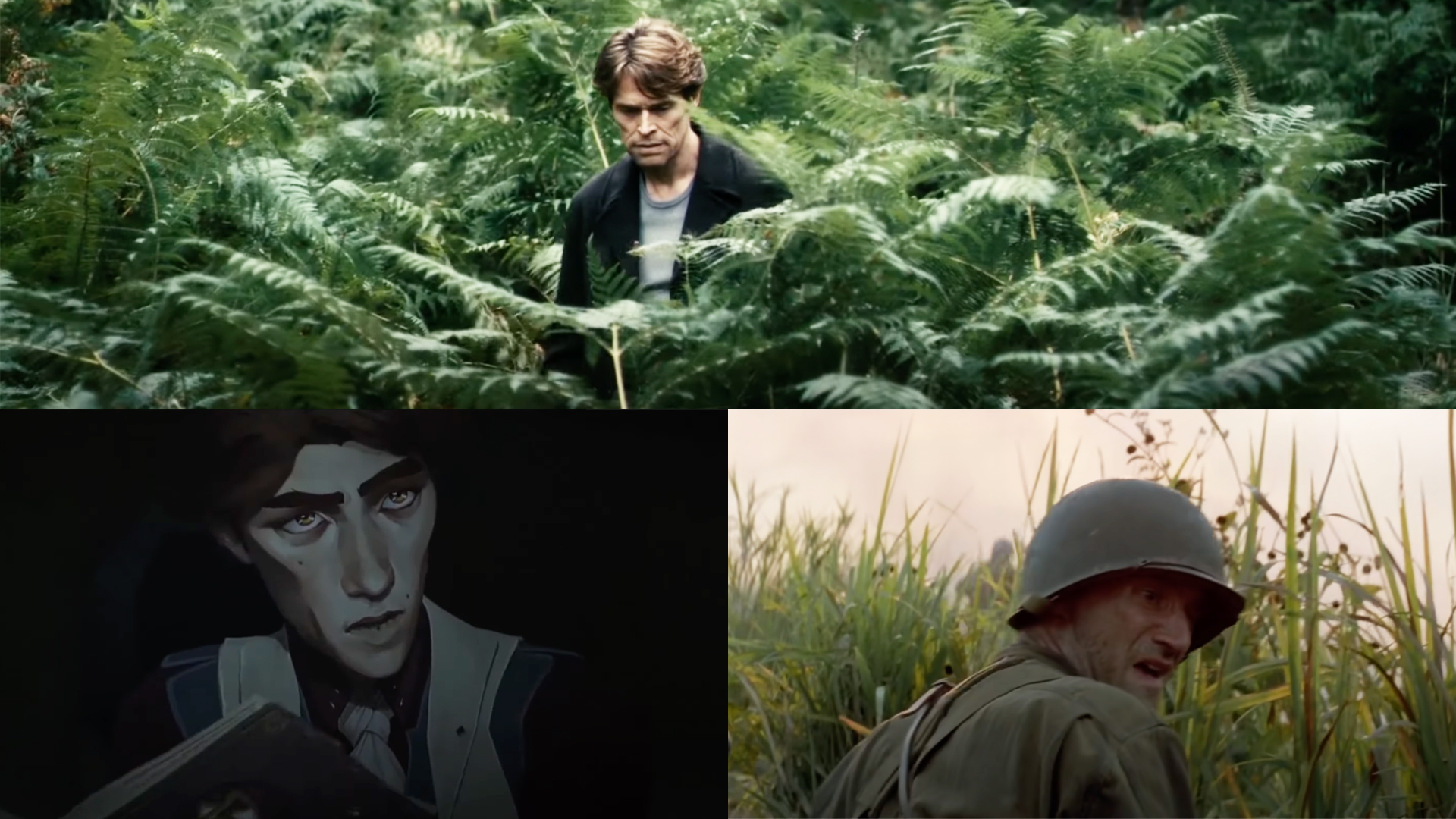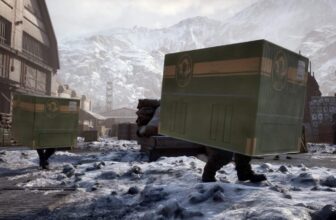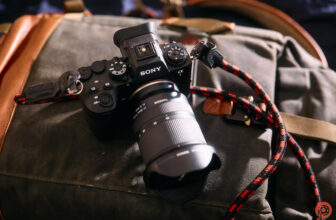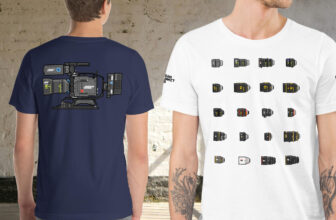
Check out our latest products

A handheld camera in a film can make an image feel all shaky, as if the earth beneath it trembles. Or it can be so subtle that you’ll barely see it. In any case, it’s not just a tool for quick point and shoot. It’s a valuable part of the visual language in film that can achieve very different effects on viewers. Provided you don’t overdo it, of course. Let’s revisit the basics and examine the psychological aspects of the handheld camera, exploring how to utilize it for effective shots and impactful storytelling.
Recently, I stumbled on a rant on the Internet, where someone listed handheld shots as something they couldn’t stand. They were irritated to see them everywhere and thought it was a highly overrated and overused technique. Well, we can surely agree that camera shake and breathing movement can be too much and create a feeling of motion sickness. So can a lot of other visual and editing choices when filmmakers use them without caution and clear intent.
However, a handheld camera is nothing new. It belongs to the classic grammar of cinematography that dates back to the early days of cinema in the 1920s and gained its popularity in the 1960s and 70s during the French New Wave with the advent of more portable and lightweight cameras. There must be a reason why it has endured all these years and remains a popular cinematic technique to this day.
The definition of a handheld camera
As the name suggests, the handheld shot is a type of movement in which the operator holds the camera without relying on supporting mechanisms like tripods, dollies, cranes, or Steadicams. Here is a definition from the “Fundamentals of Directing” course on MZed.com:

In other words, handheld movement refers to a non-mounted camera operated by a person who is free to move and point the camera wherever they choose. Nowadays, under the term “handheld” also fall shots created with the help of rigs such as shoulder mounts or easy rigs. What unites them is that they all retain some of the organic shake from the operator’s movements to various degrees. Supporting systems only help to take some of the camera’s weight off the body and to better control the amount of shake.
Handheld camera for action scenes
Although handheld shots rose to prominence through the evolution of documentary filmmaking, their role in fictional storytelling is also significant in fictional stories. We see it clearly in a lot of action sequences. The rough and edgy camera shake visually heightens the intensity of chaotic scenes, adding a sense of increased pace, elevated heartbeat, panic, and urgency to them. No wonder war films adopt this technique quite frequently. One of the classic examples is Steven Spielberg’s “Saving Private Ryan,” which is widely used in textbooks and filmmaking lessons. It famously utilizes handheld camera motion alongside a faster shutter speed in battle scenes to make the action appear sharp, jittery, intense, and highly realistic. The director and educator Kyle Wilamowski observes another war film example in the MZed course, namely, from “The Thin Red Line” by Terrence Malick:
Almost the entire movie is done handheld. In the scene above, the shake throws us right into the middle of the war drama, simulating the explosions, but also elevating the level of intensity. The camera moves chaotically, turns right, left, up, down, emphasizing that anything can happen at any time, just like in a real battle. It also feels like a character on its own, within the circumstances. This gives us – the audience – immersion, or in other words, the feeling that we are there, experiencing it firsthand.
Breathing cam
So, yes, when we think about the handheld camera, we instantly imagine scenes full of action, chaos, and rapidity. Yet, in my opinion, its biggest powers are unveiled once it becomes less apparent on screen. This technique can be used very subtly to create a feeling of intimacy and authenticity. In the subsequent short film “Summer Hit,” you’ll notice only one or two shots using stabilizing systems. The rest is handheld. Let’s watch it here (at least partially – to get a feeling) and talk about its impact on us.
Honestly, you quickly forget about the handheld aspect of the camera here. In some sequences, you won’t notice any shake at all unless you meticulously look for it. But it’s there, and it helps to increase the immersion even more. This story, the characters, and the emotions feel real. We know that it is not a documentary, but we let ourselves forget this fact.
How does the handheld camera add to this feeling of authenticity? Well, it is close to the operator’s body, so it follows the rhythm of their breathing, the slight tremble in their hands, the blood rushing through the veins, even when they try to stay still. These are subtle yet completely natural movements, as opposed to artificial, perfect Steadicam walks, for example. Close to the body – close to reality. The camera itself feels alive, breathing, experiencing the scenes in proximity, and we’re there with it.
Suspension created through the handheld camera
For the same psychological and physiological reasons, thriller and horror films love to use handheld motion to increase suspense (especially during the quiet moments, before something awful happens). For the same psychological and physiological reasons, thriller and horror films love to use handheld motion to increase suspense (especially during the quiet moments, before something awful happens). There is another factor as to why it impacts us so strongly. As the handheld camera aesthetic is very common in documentaries and home videos, we subconsciously associate it with these genres and begin to feel that these recordings are authentic. We might not really believe it, but our minds do react to it instinctively, increasing cortisol levels and creating an elevated sense of fear or panic. That’s why films like “The Blair Witch Project” or “Paranormal Activity” lean into this aesthetic completely.
However, even the ultra-subtle hints of handheld camerawork, as we discussed in the short film before, can help build up quiet, creeping dread. For example, Lars von Trier uses it often in his horror film “Antichrist” to achieve this effect.
The scene above is so quiet, yet tremendously unsettling, isn’t it? Of course, different elements play together to create this tense feeling, and the handheld camera is one of them. Its shake is almost imperceptible here, and that’s why it affects us even more. It’s not in your face, blurring the line between fiction and reality and slowly drawing the viewer into a psychological nightmare via intimacy. We move along with the camera towards a potential threat, and the feeling of unease grows until it is released.
Adding digital shake
As you can see, the handheld camera has immense power and can be applied to achieve various effects. Filmmakers understand it, and that’s why it also became part of the language of animated movies at some point.
In animation, there isn’t a living, breathing camera operator; all moves can be 100% precise and controlled. Therefore, modern animators must intentionally add these “organic” imperfections, mimicking the handheld camera, which requires more effort and time. Yet they do it. A lot, actually, and not only in action-packed sequences. Here is a dialogue scene from Netflix’s series “Arcane” between Viktor and Jayce, where the former prevents the latter from jumping off a broken ledge of his ruined house.:
A quiet, intimate scene. Very slight handheld camera shake. And the moment feels real, humanized.
Handheld camera or not
To like the handheld camera aesthetic or not is up to you. But we cannot deny its impact on filmmaking and storytelling. While overusing it – or any other tool for that matter – might irritate many viewers, in the right hands, it’s a beautiful gem of cinematic and narrative work.
What about you? Do you often shoot handheld? In what types of scenes do you think camera shake works best? Let’s talk a bit more about it in the comments below.
Full disclosure: MZed is owned by CineD.
Feature image: film stills from “Antichrist” by Lars von Trier, 2009; “Arcane” series on Netflix, 2021; and “The Thin Red Line” by Terrence Malick, 1998.

![[2025 Upgraded] Retractable Car Charger, SUPERONE 69W Car Phone Charger with Cables Fast Charging, Gifts for Men Women Car Accessories for iPhone 16 15 14 13 12, Samsung, Black](https://i1.wp.com/m.media-amazon.com/images/I/61SaegZpsSL._AC_SL1500_.jpg?w=300&resize=300,300&ssl=1)



![[True Military-Grade] Car Phone Holder【2024 Stronger Suction & Clip】 Universal Cell Phone Holder for Car Mount for Dashboard Windshield Air Vent Long Arm Cell Phone Car Mount Thick Case,Black](https://i2.wp.com/m.media-amazon.com/images/I/715PBCuJezL._AC_SL1500_.jpg?w=300&resize=300,300&ssl=1)
![[エレコム] スマホショルダー ショルダーストラップ 肩掛け ストラップホールシート付属 丸紐 8mm P-STSDH2R08](https://i3.wp.com/m.media-amazon.com/images/I/51BMFf06pxL._AC_SL1500_.jpg?w=300&resize=300,300&ssl=1)







